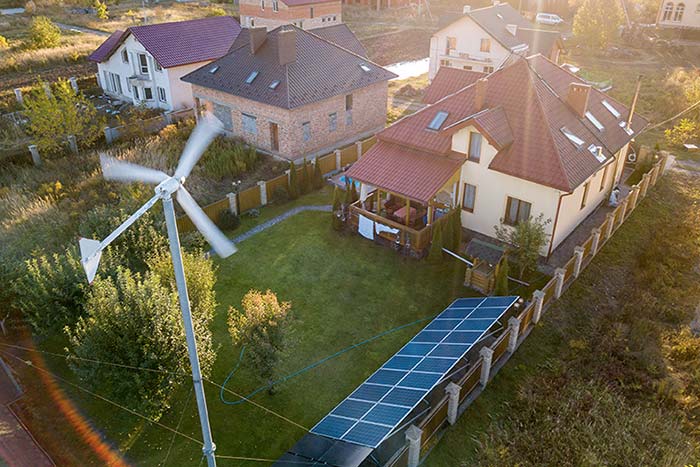
In today's world, the importance of environmental responsibility and sustainable living cannot be overstated.
As individuals, we have the power and the responsibility to make conscious choices that positively impact our planet.
This article presents eight essential guidelines for embracing environmental responsibility, from adopting eco-friendly practices to promoting ethical consumption.
By following these practical and informative tips, we can all contribute to the creation of an environmentally conscious and sustainable future.
Eco-Friendly Practices
Implementing a range of eco-friendly practices is crucial for individuals and communities to reduce their environmental impact and promote sustainable living.
One important aspect of eco-friendly practices is adopting sustainable transportation options. By choosing to walk, bike, or use public transportation instead of driving cars, individuals can significantly reduce their carbon footprint and contribute to a cleaner and greener environment.
Additionally, incorporating eco-friendly fashion choices into our daily lives is another way to promote sustainability. This can involve purchasing clothing made from organic or recycled materials, supporting ethical and fair-trade fashion brands, and practicing mindful consumption by opting for timeless and versatile pieces.

Embracing these eco-friendly practices not only helps protect the planet, but also allows individuals to express their personal freedom in making conscious choices for a sustainable future.
Green Lifestyle
To further promote sustainability and reduce our environmental impact, it is important to embrace a green lifestyle. Here are some practical ways to incorporate green practices into your daily life:
- Green Transportation:
- Opt for walking, cycling, or using public transportation whenever possible.
- If owning a car is necessary, choose an electric or hybrid vehicle to reduce emissions.
- Sustainable Fashion:
- Buy clothes made from organic, recycled, or sustainable materials.
- Choose timeless, high-quality pieces that will last longer and reduce the need for constant replacements.
By adopting green transportation methods, such as walking or using public transportation, we can minimize our carbon footprint. Additionally, supporting sustainable fashion not only reduces waste but also promotes ethical production practices.
Embracing these changes in our lifestyle will not only benefit the environment but also contribute to our personal freedom by reducing our dependence on non-renewable resources.
Conservation Efforts
Conservation is a vital aspect of environmental responsibility in sustainable living. It involves the conscious effort to protect and preserve natural resources for future generations. Conservation awareness plays a crucial role in promoting sustainable practices and ensuring the longevity of our ecosystems. By understanding the importance of conservation, individuals can make informed choices that minimize their impact on the environment.
One area where conservation efforts are particularly significant is wildlife protection. Many species are facing the threat of extinction due to habitat loss, pollution, and climate change. By actively participating in wildlife conservation initiatives, individuals can contribute to the preservation of biodiversity and the ecological balance of our planet.
Conservation efforts can take various forms, including supporting conservation organizations, reducing waste and consumption, practicing sustainable agriculture, and promoting renewable energy sources. By incorporating these practices into our daily lives, we can make a positive impact on the environment and ensure a sustainable future for generations to come.

Waste Reduction Strategies
Waste reduction strategies play a vital role in minimizing our environmental impact.
Recycling plastic waste helps to reduce the amount of plastic ending up in landfills and oceans.
Composting food scraps and reusing household items further contribute to reducing waste and promoting a more sustainable way of living.
Recycling Plastic Waste
Plastic recycling plays a crucial role in sustainable waste management practices. By recycling plastic waste, we can significantly reduce plastic pollution and contribute to ocean conservation. Here are two effective strategies for recycling plastic waste:
- Separate and sort: Properly separating and sorting plastic waste is essential for effective recycling. This involves categorizing plastics based on their resin codes and separating them accordingly.
- Educate yourself: Learn about the different types of plastics and their recycling capabilities. This knowledge will help you make informed decisions when sorting plastic waste.
- Use recycling facilities: Utilize local recycling centers or collection programs to ensure that your plastic waste is properly recycled. Take advantage of designated drop-off locations or curbside recycling services.
- Reduce and reuse: Another effective strategy is to reduce and reuse plastic waste. By minimizing our consumption of single-use plastics and finding alternative reusable options, we can significantly decrease the amount of plastic waste generated.
- Say no to single-use plastics: Opt for reusable alternatives such as water bottles, shopping bags, and food containers instead of disposable plastic items.
- Choose eco-friendly packaging: Look for products with minimal or recyclable packaging. Support businesses that prioritize sustainable packaging materials.
Incorporating these strategies into our daily lives will not only help in waste reduction but also contribute to a cleaner environment and healthier oceans.
Composting Food Scraps
One effective waste reduction strategy for sustainable living is incorporating composting into our daily routines. Composting food scraps not only helps in reducing landfill waste but also provides a valuable source of nutrient-rich soil for our gardens.
Vermicomposting techniques, which involve the use of worms to break down organic matter, can be a practical and efficient method for composting food scraps. By using a specially designed worm bin, food scraps can be added to the bin along with bedding materials like shredded newspaper or cardboard. The worms then consume the organic matter, breaking it down into nutrient-rich castings.

These castings can be used as a natural fertilizer for plants, promoting healthy growth and reducing the need for chemical fertilizers. By composting food scraps, we can contribute to a more sustainable and environmentally responsible way of living.
Reusing Household Items
In exploring waste reduction strategies for sustainable living, a practical and effective approach is reusing household items. By upcycling furniture and repurposing clothing, we can minimize waste and contribute to a more sustainable lifestyle. Here are some ideas to get you started:
- Upcycling furniture:
- Turn an old wooden ladder into a stylish bookshelf.
- Transform an unused dresser into a unique TV stand.
- Repurposing clothing:
- Use old t-shirts to create a colorful and eco-friendly quilt.
- Turn worn-out jeans into trendy denim shorts.
These simple strategies not only reduce waste but also save money and promote creativity. By reusing household items, we can make a positive impact on the environment while embracing a lifestyle of freedom and sustainability.
Energy Efficiency Tips
When it comes to energy efficiency, there are two key areas to focus on: optimal home temperature and efficient lighting choices.
By setting your thermostat to a comfortable yet energy-saving temperature, you can reduce your energy consumption and lower your utility bills.
Additionally, choosing energy-efficient lighting options, such as LED bulbs, can significantly decrease your energy usage without compromising on brightness or quality.
Optimal Home Temperature
To maintain optimal energy efficiency in your home, it is important to set the temperature at a level that promotes comfort while minimizing energy consumption. Here are some tips to help you achieve this:

- Adjust your thermostat settings: Lowering your thermostat by just a few degrees during the winter or raising it during the summer can significantly reduce energy consumption. Aim for a temperature that is comfortable for you but not excessive.
- Take advantage of natural heating and cooling: Open your curtains during the day to let sunlight warm your home in the winter, and close them at night to retain heat. In the summer, use blinds or shades to block out direct sunlight and keep your home cool.
- Use programmable thermostats: These devices allow you to schedule temperature changes based on your daily routine, ensuring that energy is not wasted when you're not home.
Efficient Lighting Choices
One important consideration for achieving energy efficiency in lighting is making efficient lighting choices. By using energy saving bulbs, such as LED or CFL bulbs, you can significantly reduce your energy consumption and lower your electricity bills. These bulbs are designed to use less energy while providing the same level of brightness as traditional incandescent bulbs.
Another efficient lighting choice is to maximize natural daylighting in your home. By utilizing natural light during the day, you can reduce the need for artificial lighting and save energy. This can be achieved by strategically placing windows, skylights, or light tubes in areas where natural light is most needed.
Additionally, using dimmer switches and timers can help control the amount of light being used, further enhancing energy efficiency in lighting.
Utilizing Renewable Resources
Renewable resources play a crucial role in achieving environmental responsibility and sustainable living. By harnessing renewable energy sources, we can reduce our reliance on fossil fuels and decrease carbon emissions.
Here are two key ways to utilize renewable resources:
- Embrace renewable energy sources: Transitioning to solar, wind, and hydroelectric power can significantly reduce our carbon footprint. Installing solar panels on rooftops and investing in wind turbines can help generate clean energy for homes and businesses. By taking advantage of renewable energy sources, we can contribute to a greener and more sustainable future.
- Practice sustainable agriculture: Sustainable farming methods, such as organic farming and permaculture, promote biodiversity, conserve water, and reduce the use of chemical fertilizers and pesticides. By adopting these practices, we can protect the environment, preserve soil quality, and ensure a healthier and more sustainable food system.
Incorporating ethical consumption practices is crucial for achieving environmental responsibility and sustainable living.
One way to promote ethical consumption is through the adoption of ethical fashion. This involves supporting brands that prioritize fair labor practices, use sustainable materials, and minimize their environmental impact. By choosing clothes made from organic or recycled materials, consumers can reduce their contribution to pollution and waste in the fashion industry.

Another aspect of ethical consumption is sustainable transportation. Opting for public transportation, carpooling, biking, or walking instead of driving alone in a car can significantly decrease carbon emissions and air pollution. Additionally, investing in electric or hybrid vehicles further promotes sustainable transportation.
To foster an environmentally responsible community, it is essential to prioritize collective efforts towards sustainable practices and education on environmental stewardship. By engaging the community and promoting sustainable infrastructure, we can create a lasting impact on the environment. Here are some practical steps to build an environmentally responsible community:
- Community Engagement:
- Encourage active participation in environmental initiatives through workshops, seminars, and community events.
- Foster collaboration between community members, local organizations, and government agencies to address environmental challenges.
- Sustainable Infrastructure:
- Promote the use of renewable energy sources such as solar panels and wind turbines.
- Implement green building practices by constructing energy-efficient buildings and promoting the use of sustainable materials.
Frequently Asked Questions
How Do Eco-Friendly Practices Contribute to Sustainable Living?
Eco-friendly practices contribute to sustainable living by reducing resource consumption, minimizing waste generation, and promoting biodiversity conservation. Such practices benefit the environment, enhance human health, and ensure the long-term availability of resources for future generations.
What Are Some Examples of Green Lifestyle Choices?
Eco-friendly transportation and sustainable fashion are examples of green lifestyle choices. Opting for public transportation, biking, or electric cars reduces carbon emissions. Choosing clothing made from organic, recycled, or sustainable materials minimizes environmental impact.
How Can Individuals Contribute to Conservation Efforts?
Individual actions have a global impact, and small changes can make a big difference in conservation efforts. Practical tips for individuals to contribute to environmental sustainability include reducing waste, conserving energy, and supporting eco-friendly businesses.
What Are Some Effective Waste Reduction Strategies?
Effective waste reduction strategies include proper waste management, such as implementing recycling initiatives, composting organic waste, and reducing single-use items. These practices contribute to a more sustainable and environmentally responsible lifestyle.
How Can Energy Efficiency Be Improved in Daily Life?
In daily life, energy efficiency can be improved by utilizing energy-saving appliances and implementing smart home technology. These advancements help reduce energy consumption, lower utility bills, and contribute to a more sustainable and environmentally responsible lifestyle.

 Family Craft ProjectsHome ImprovementCooking and BakingReuse and RecycleDIY GiftsEco-Friendly ProjectsDIY Home SolutionsSeasonal ActivitiesFun and GamesLearn TogetherPrivacy PolicyTerms And Conditions
Family Craft ProjectsHome ImprovementCooking and BakingReuse and RecycleDIY GiftsEco-Friendly ProjectsDIY Home SolutionsSeasonal ActivitiesFun and GamesLearn TogetherPrivacy PolicyTerms And Conditions

 Family Craft ProjectsHome ImprovementCooking and BakingReuse and RecycleDIY GiftsEco-Friendly ProjectsDIY Home SolutionsSeasonal ActivitiesFun and GamesLearn TogetherPrivacy PolicyTerms And Conditions
Family Craft ProjectsHome ImprovementCooking and BakingReuse and RecycleDIY GiftsEco-Friendly ProjectsDIY Home SolutionsSeasonal ActivitiesFun and GamesLearn TogetherPrivacy PolicyTerms And Conditions
